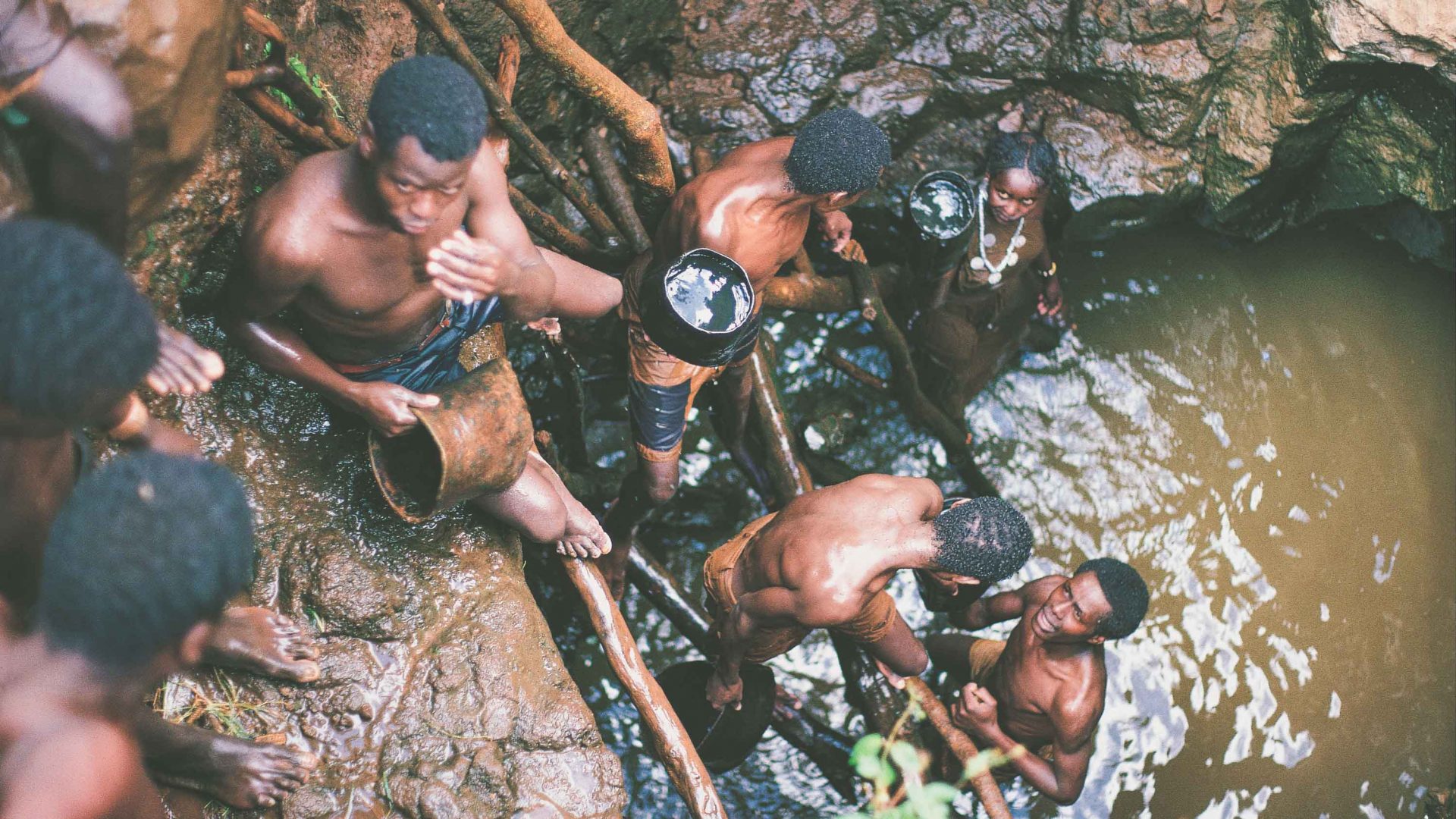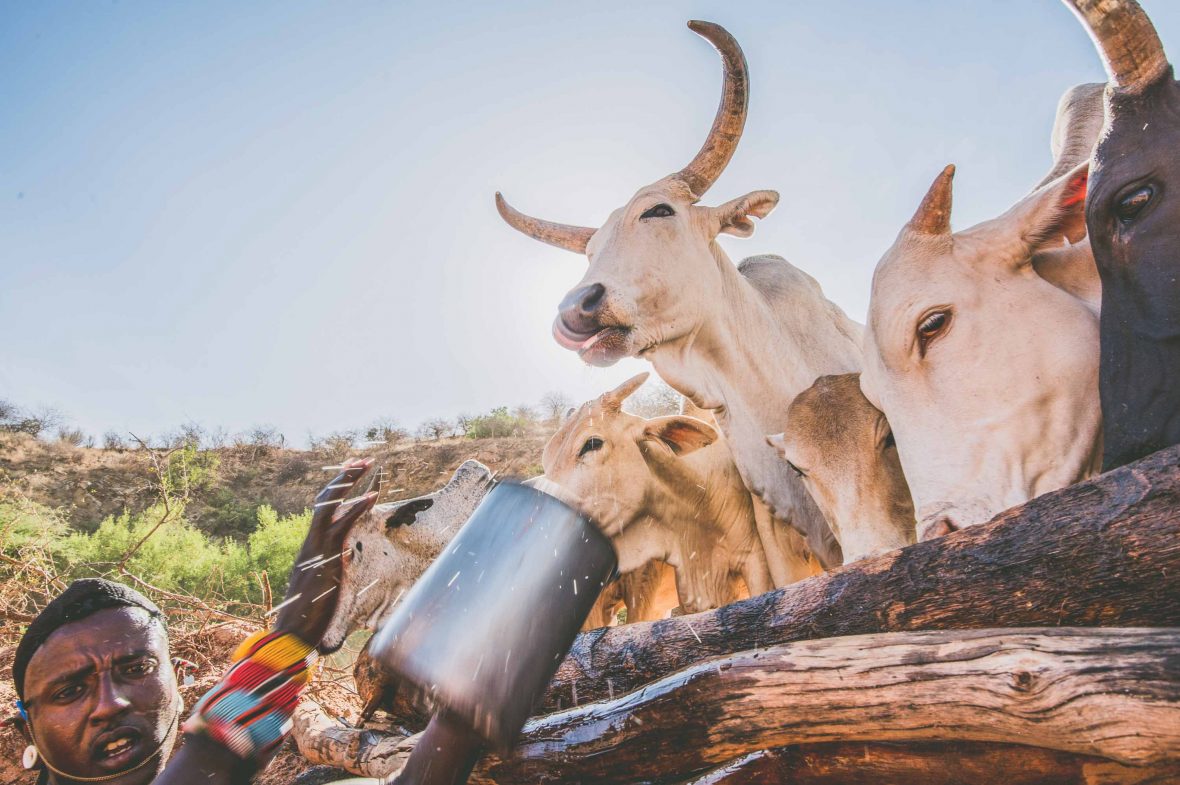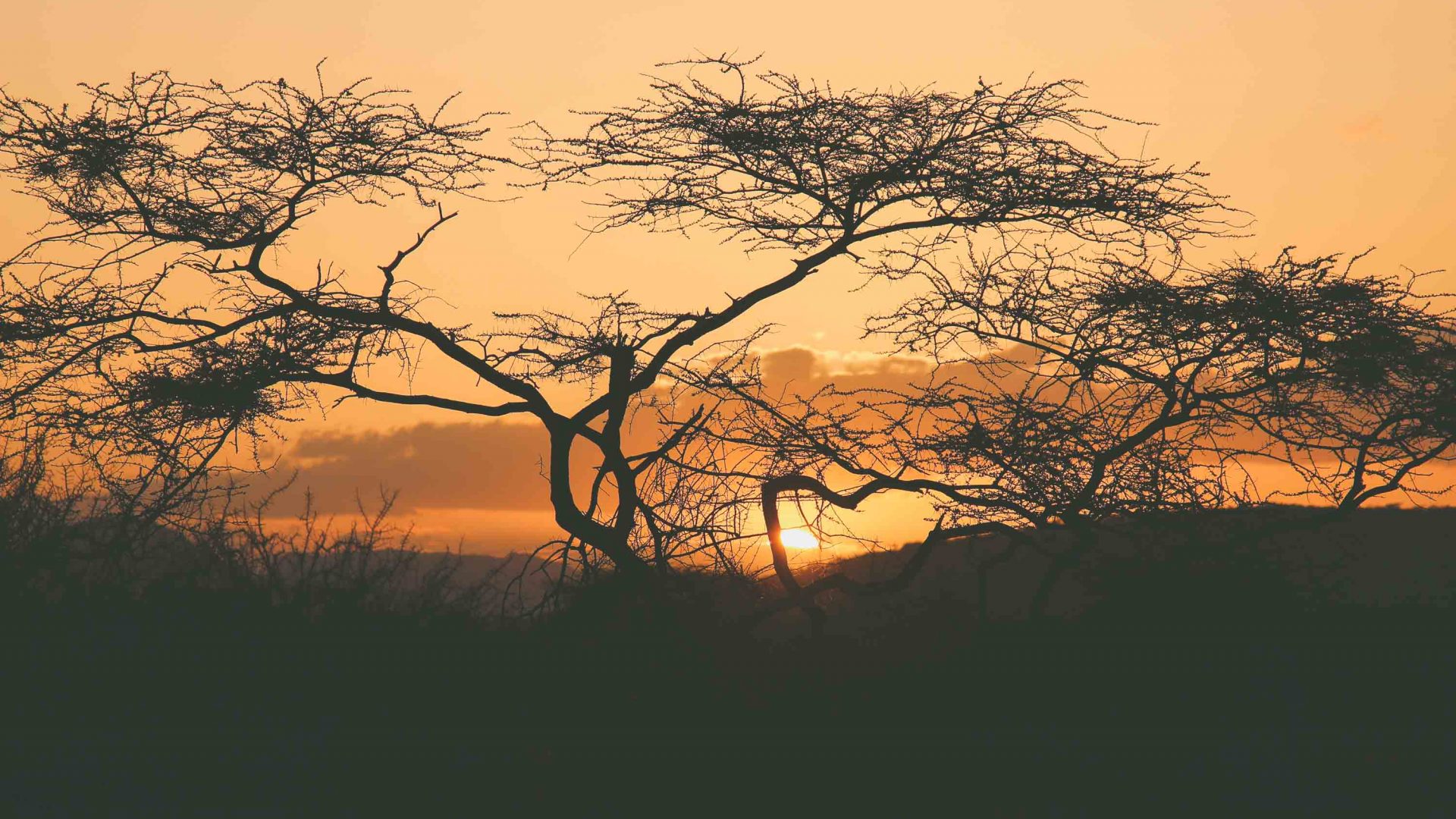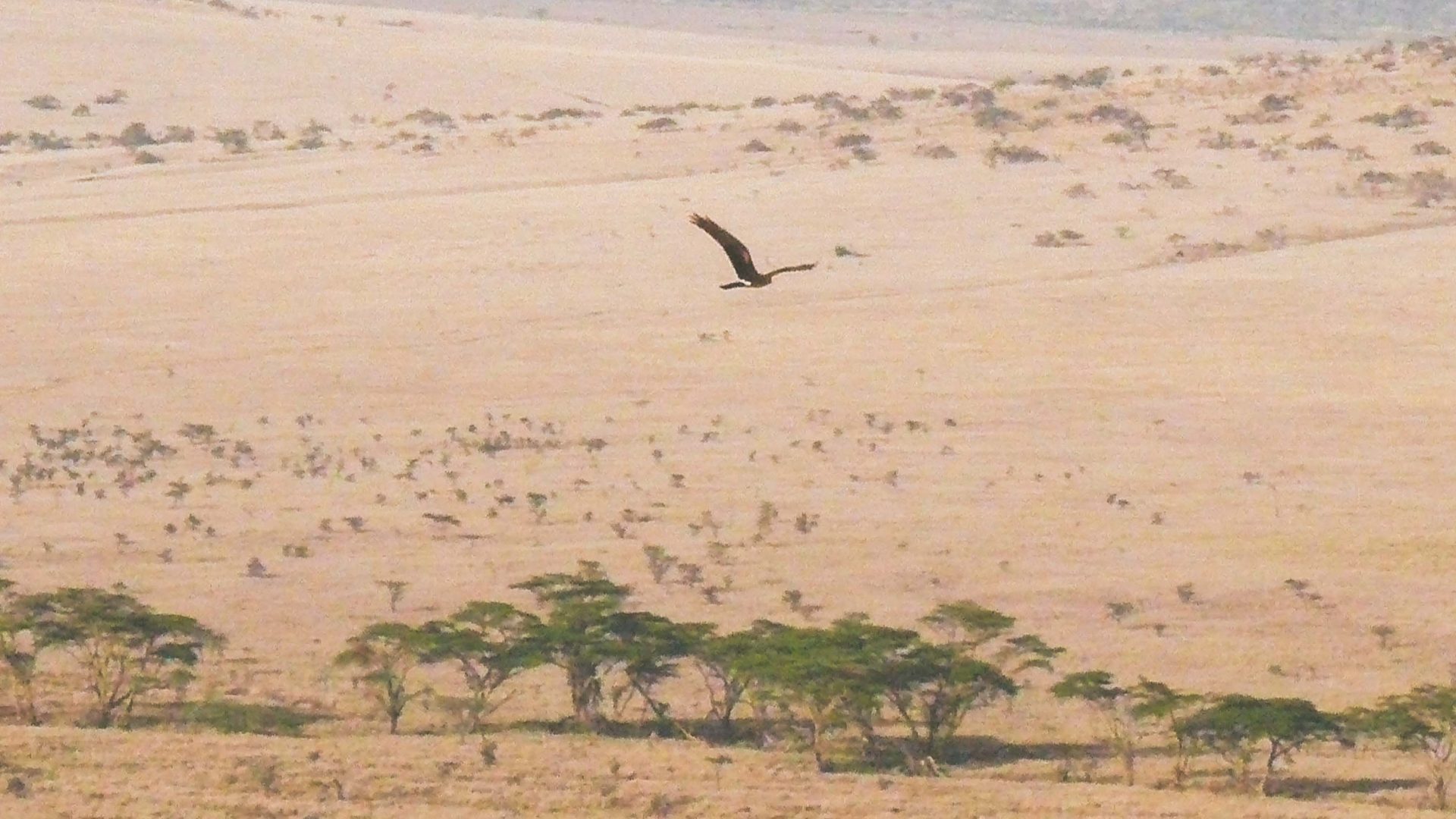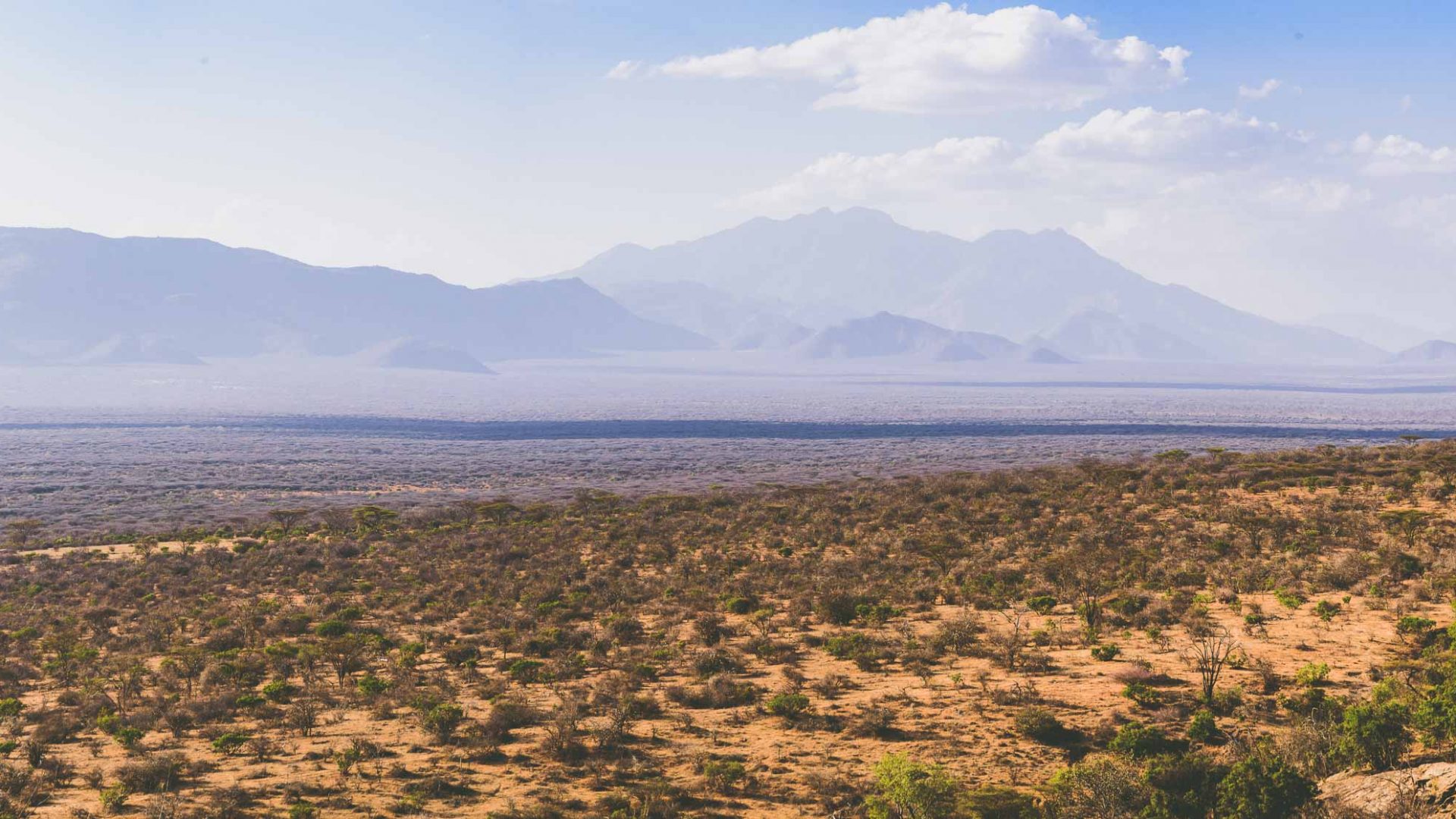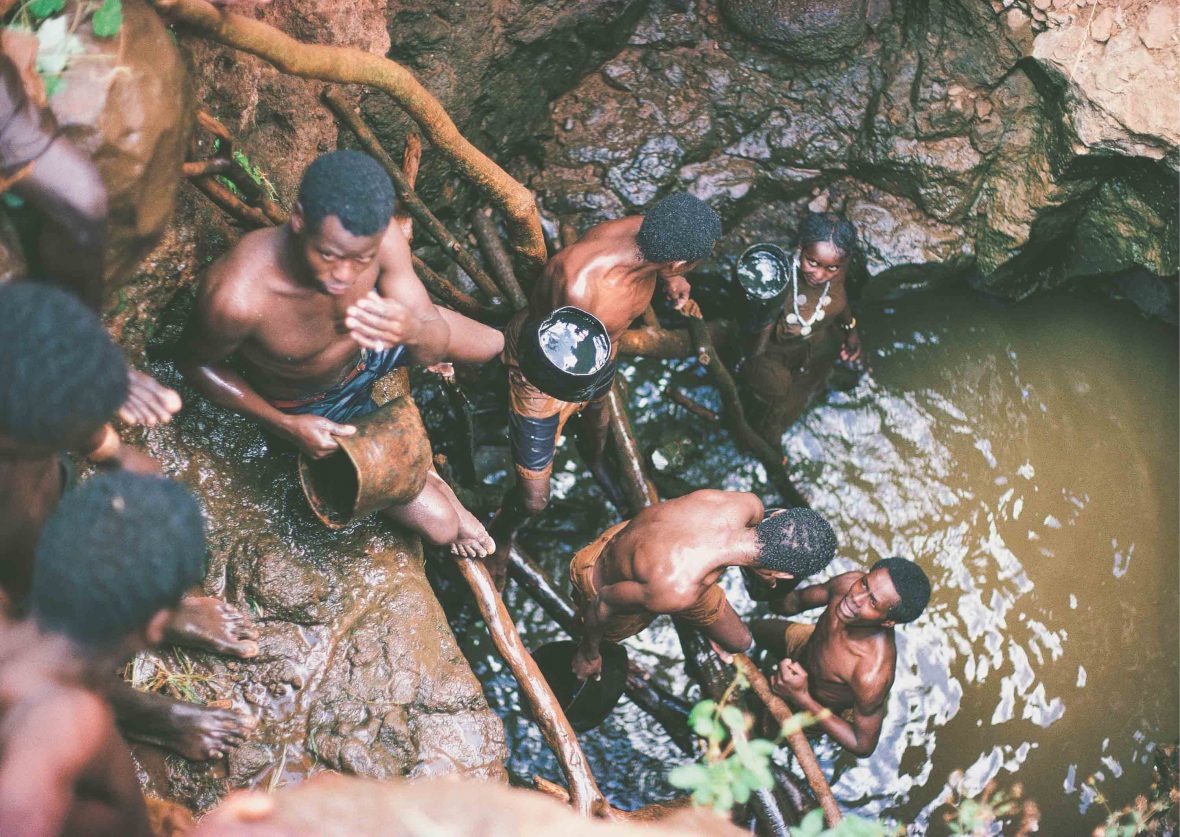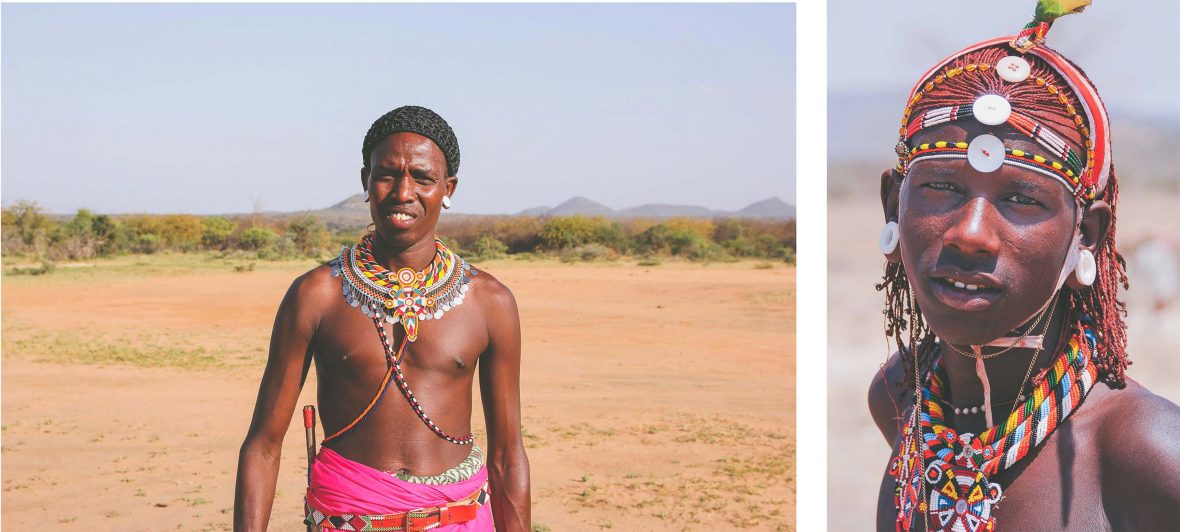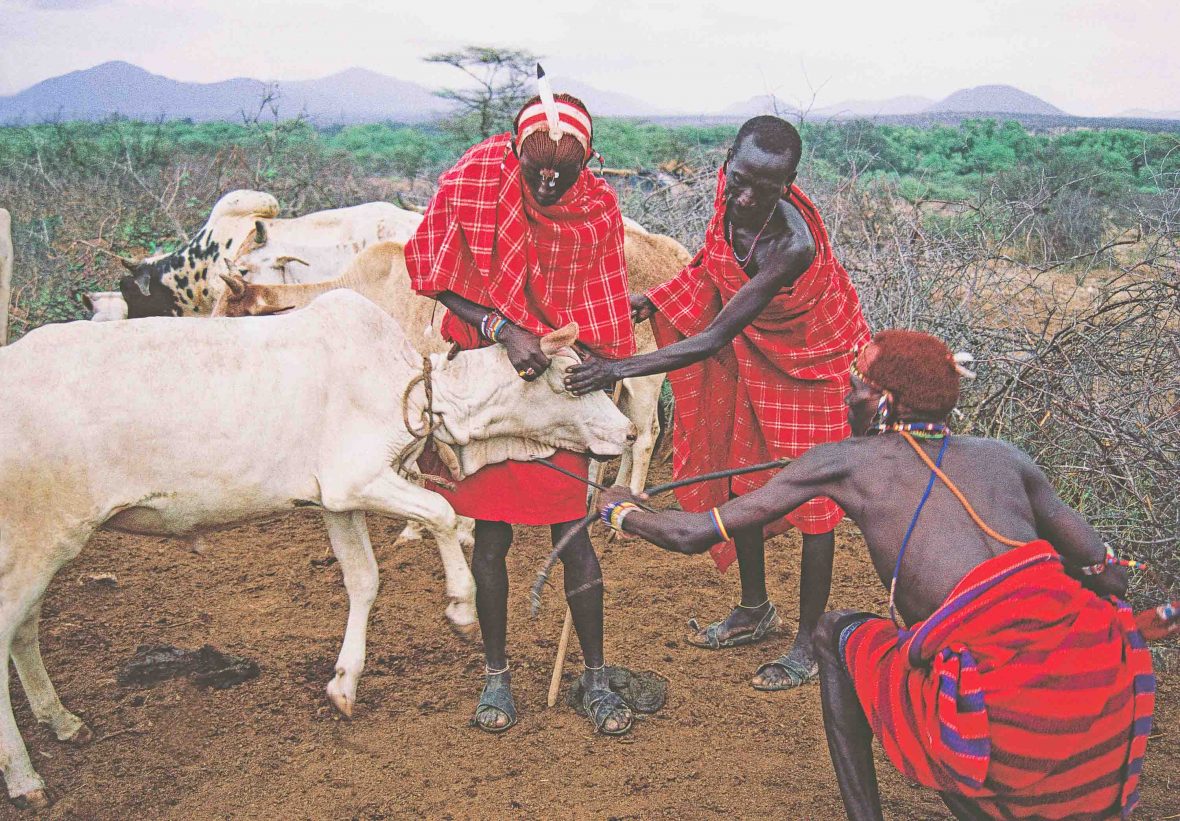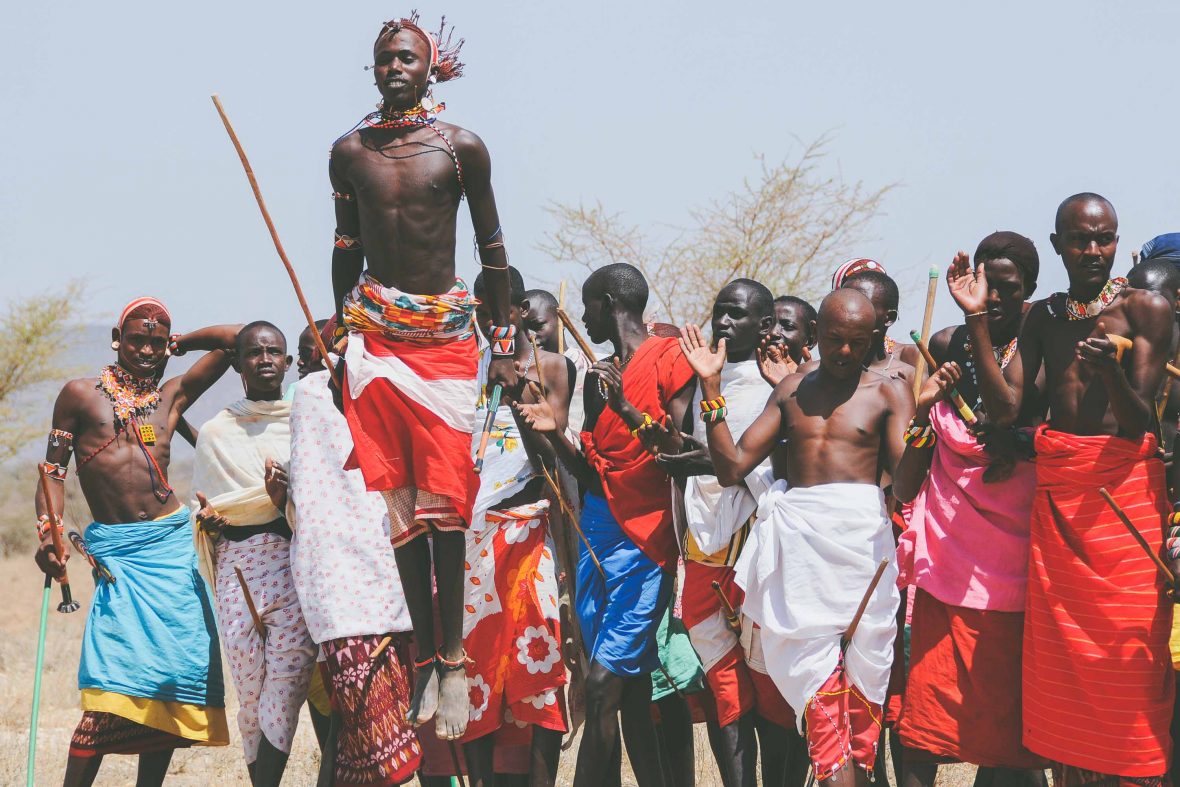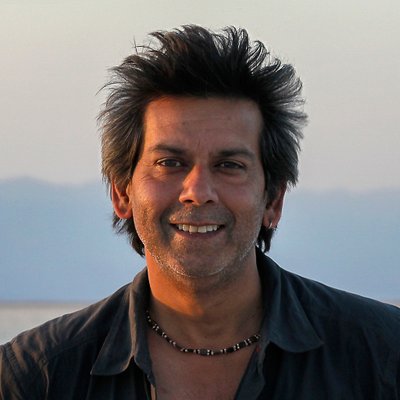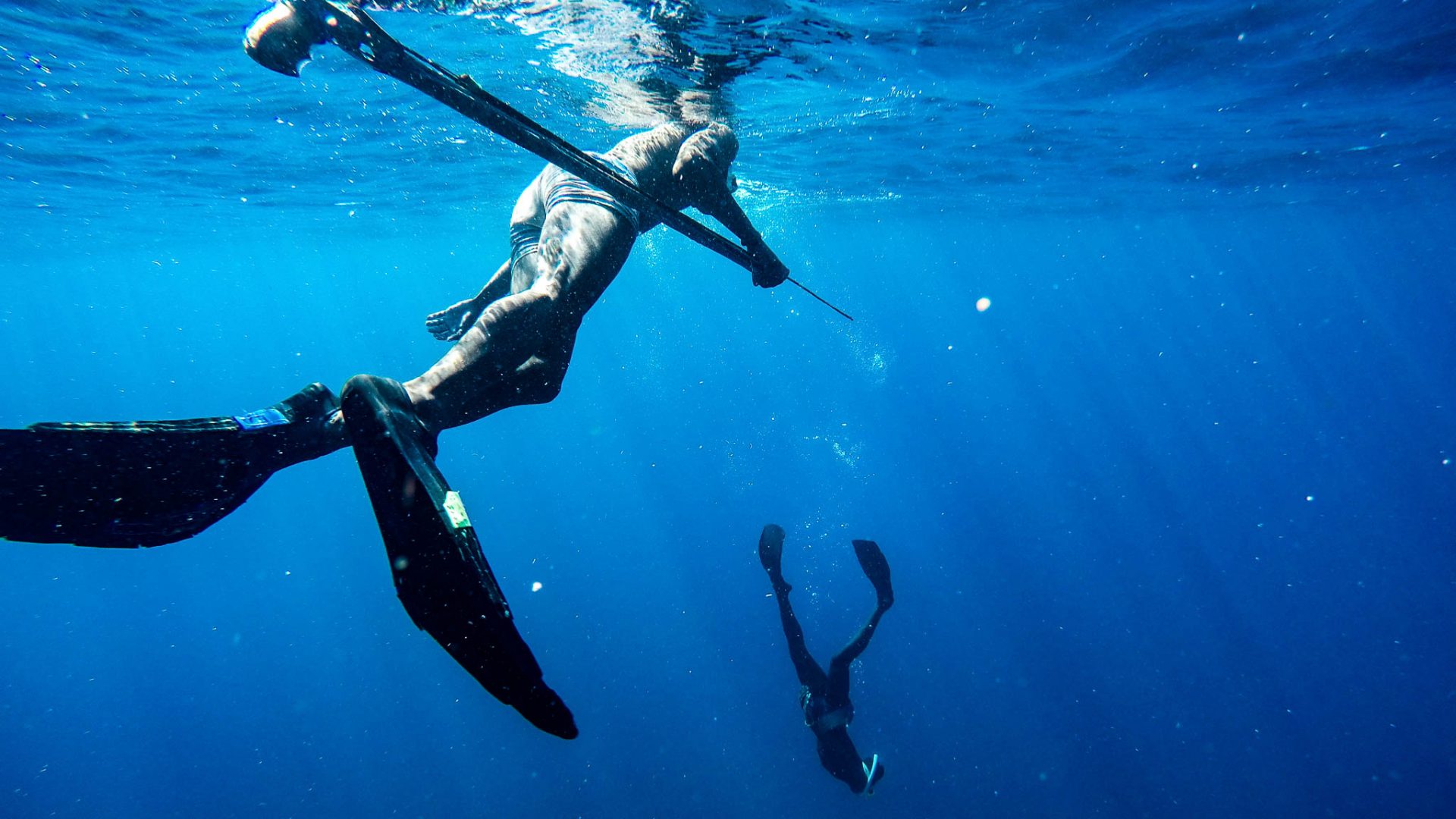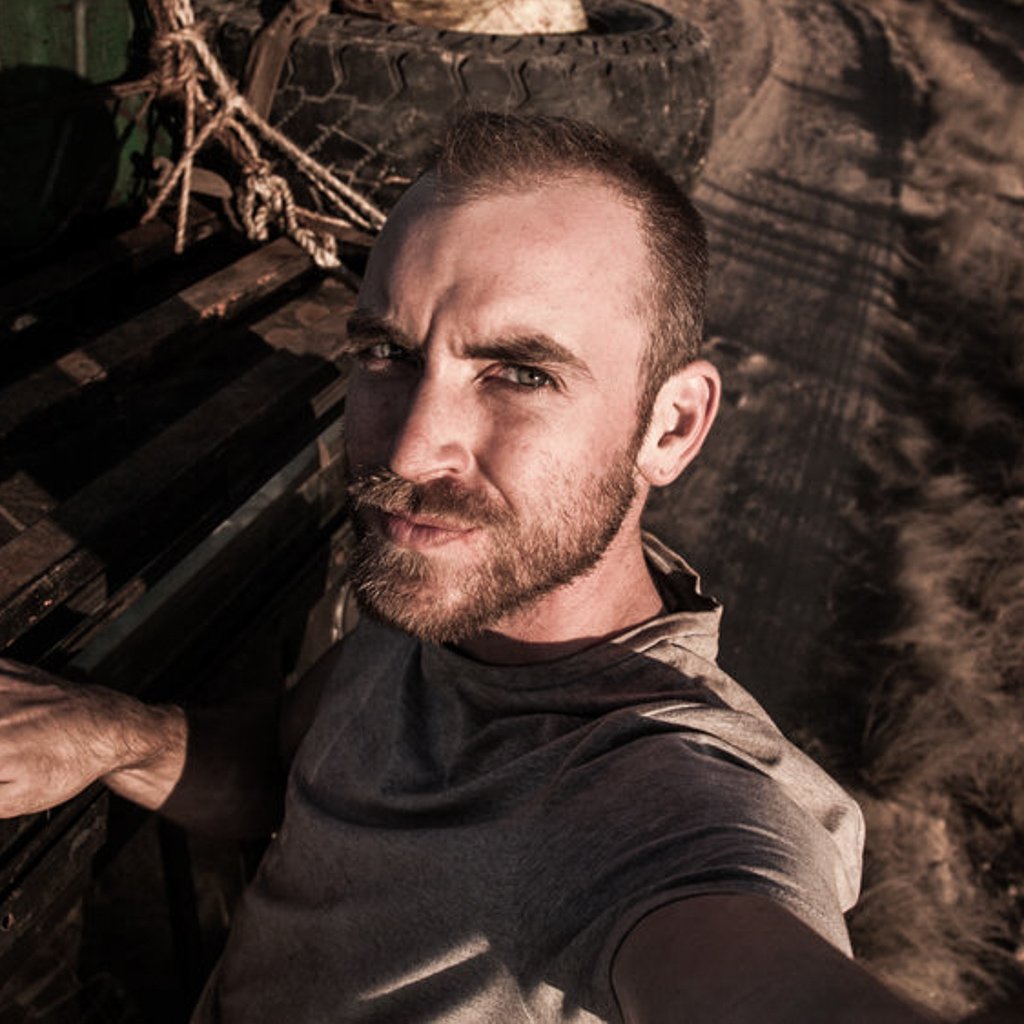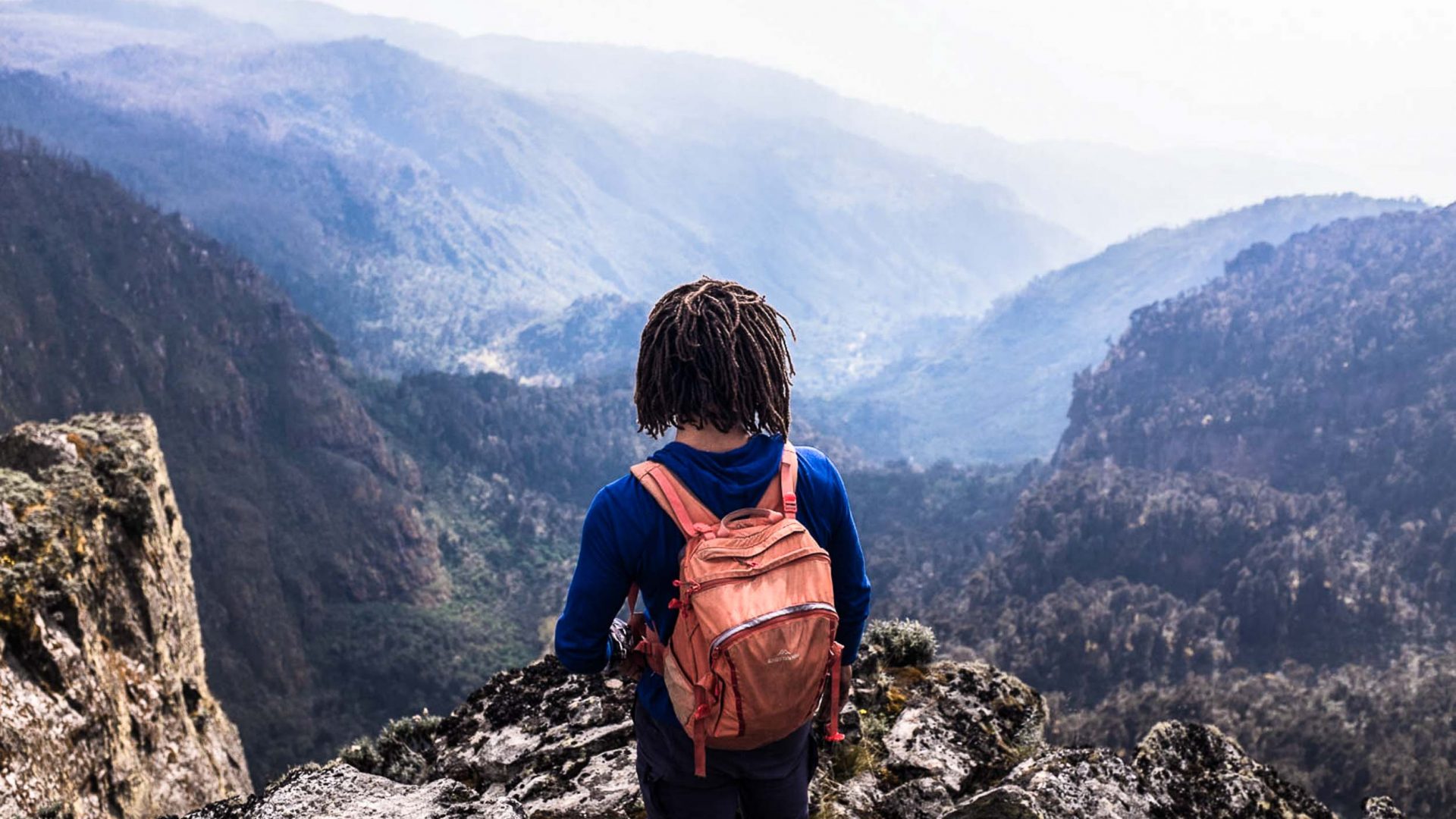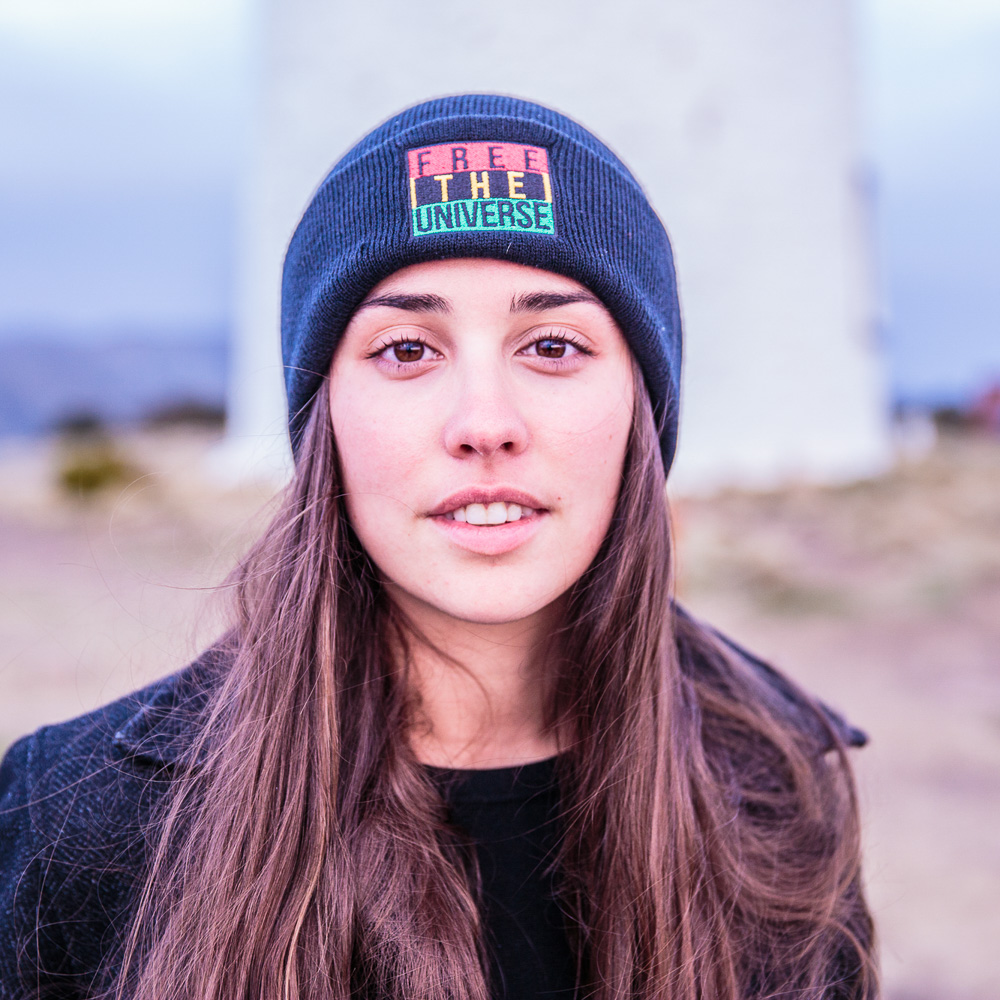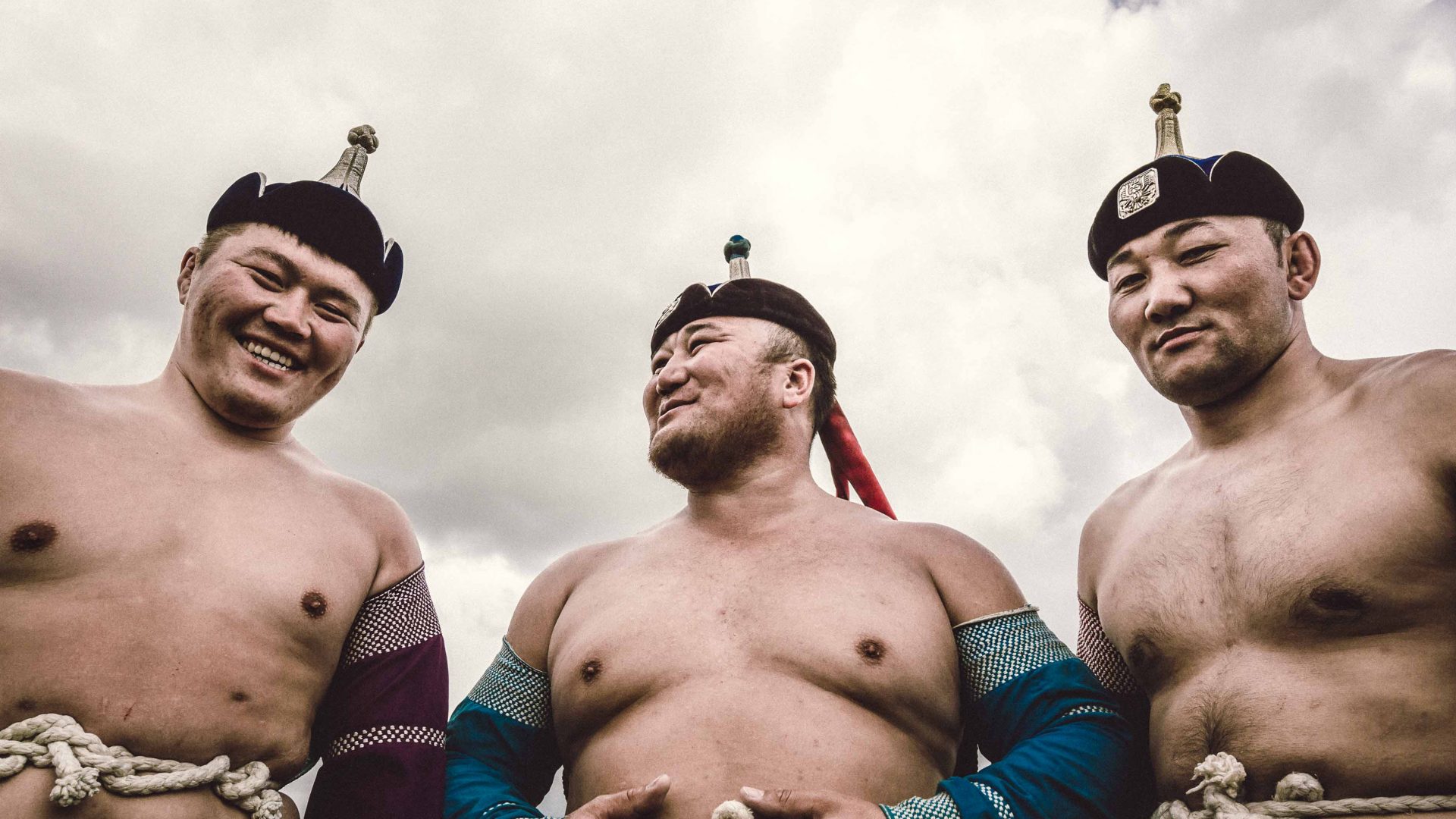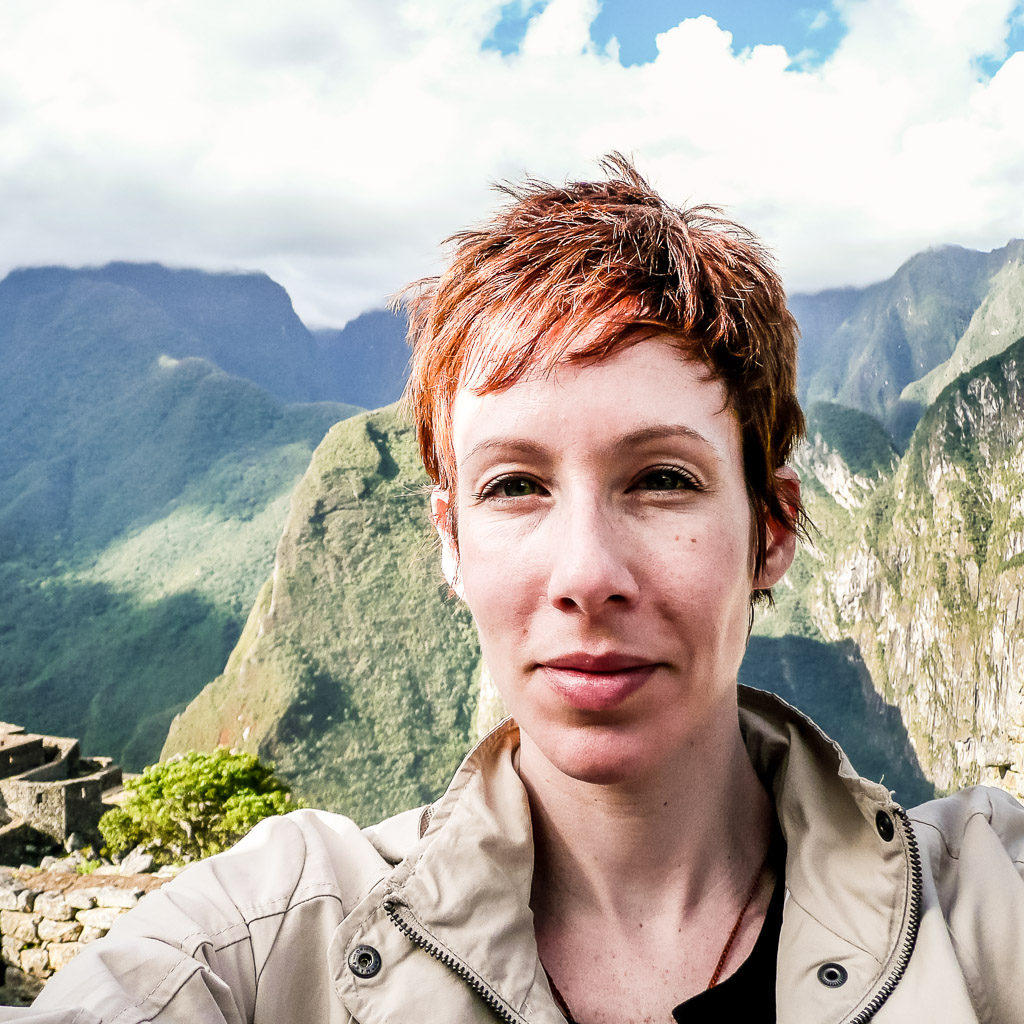These are no ordinary wells. The ‘singing wells of Namunyak’ are where Kenya’s Samburu hersdsmen go to sing love songs to their cows. Oh, and to discuss village matters, plan raids and dance with their partners. Gavin Haines gets a rare insight.
The guns, I want to know about the guns: What’s with all the AK-47s?
First, though, let’s talk about cows, which are arriving in ever-greater numbers at this dried-up riverbed in Kenya’s Namunyak Wildlife Conservancy. There are thousands of them and they’ve come to slay their thirst at the dozen or so water troughs that are scattered across the parched earth. Everything is thirsty here.
Next to each trough is a well and in each well a human chain comprised of lithe young men, who pass buckets of water up from the darkened depths to the sunny surface. The men in the wells are naked—their bodies glisten with sweat—and they are singing love songs in the Samburu tongue; not to their wives, who are washing clothes nearby, but to their cows, who are mainly mooing and pooing.
“I will always be with you, I will always be behind you—you are my lovely cows,” translates Robert Lemayian, a Samburu herdsman and tour guide, as we eavesdrop at one of the wells. “You have to let them know that you will protect them,” he adds, citing big cats as the main cause of anxiety amongst cattle.
RELATED: There’s no Tinder in the desert: How Chad’s Wodaabe nomads find love
There may be as many as 300 cows in one herd, says Robert, but every animal has a name; and when their name echoes from the well, it’s their turn to come and have a drink.
Chaperoning them to the troughs are young boys—tomorrow’s herdsmen—who have sticks and aren’t afraid to use them. Thwack. The sound of wood on hide. Thwack. And again. I’m struck by the contrast between the sweet songs of the wells and the boys’ overzealous use of their sticks.
There’s also the not-so-small matter of the AK-47s, which some men have slung over their shoulders. Soviet-made Kalashnikovs, it transpires, are the latest addition to the Samburu’s already potent arsenal, which includes a knife, spear and wooden club known as a runga.
RELATED: Inside the lives of Mongolia’s Kazakh nomads
Robert says the rifles act as a warning to enemy spies, who routinely survey the wells. Hiding in nearby bushes, they identify the herdsmen with the most cows and the least security, before returning home, in some cases walking for several days, often into neighboring Somalia, to pass on their intel. Cattle raids will likely follow.
But not if the Samburu strike first, which I’m told they often do. Indeed, many raids on enemy tribes have been plotted at these wells, which, during the dry season, draw herdsmen from far and wide.
The Samburu people, says Robert, believe they have a divine right to all cows. “Cattle are sacred to us,” he explains. “We don’t believe we are stealing livestock from other people; we believe that we are bringing home what belongs to us.”
The Samburu rarely steal cattle from each other, he says, but they will walk for many days to relieve rival tribes of their herds.
“We take anything from four to 200 cattle—it’s very violent,” says Robert, who’s wearing traditional Samburu clothing of beaded necklaces, colorful bracelets and a red and blue cloth that resembles a skirt. “We shoot to kill. We lose quite a lot of young men.”
Being at the wells and hearing these stories is a great privilege. Few tourists venture up here and those who do aren’t permitted to take photographs, which seems entirely appropriate given the intimacy of the setting.
Not living vicariously through my lens affords me the opportunity to thoroughly take it all in. I look in awe at the scene: The naked men, the colorfully-dressed women, the scrawny cows, the stick-wielding boys, the guards with AK-47s and the distant bushes that may or may not harbor enemy spies. It’s like nothing I’ve seen anywhere, ever.
Though most people seem to be working hard, the wells are also a place for play. “In the evenings, we sing and dance with our girlfriends and record it on our phones,” says Robert. “Afterwards you play it back and if it is not good, you delete it and do it again.”
The wells are also a place to exchange news; of births, marriages and deaths. “We come here to get information,” says Robert, likening the experience to reading a newspaper. “If there is a wedding happening, then you find out about it here.”
